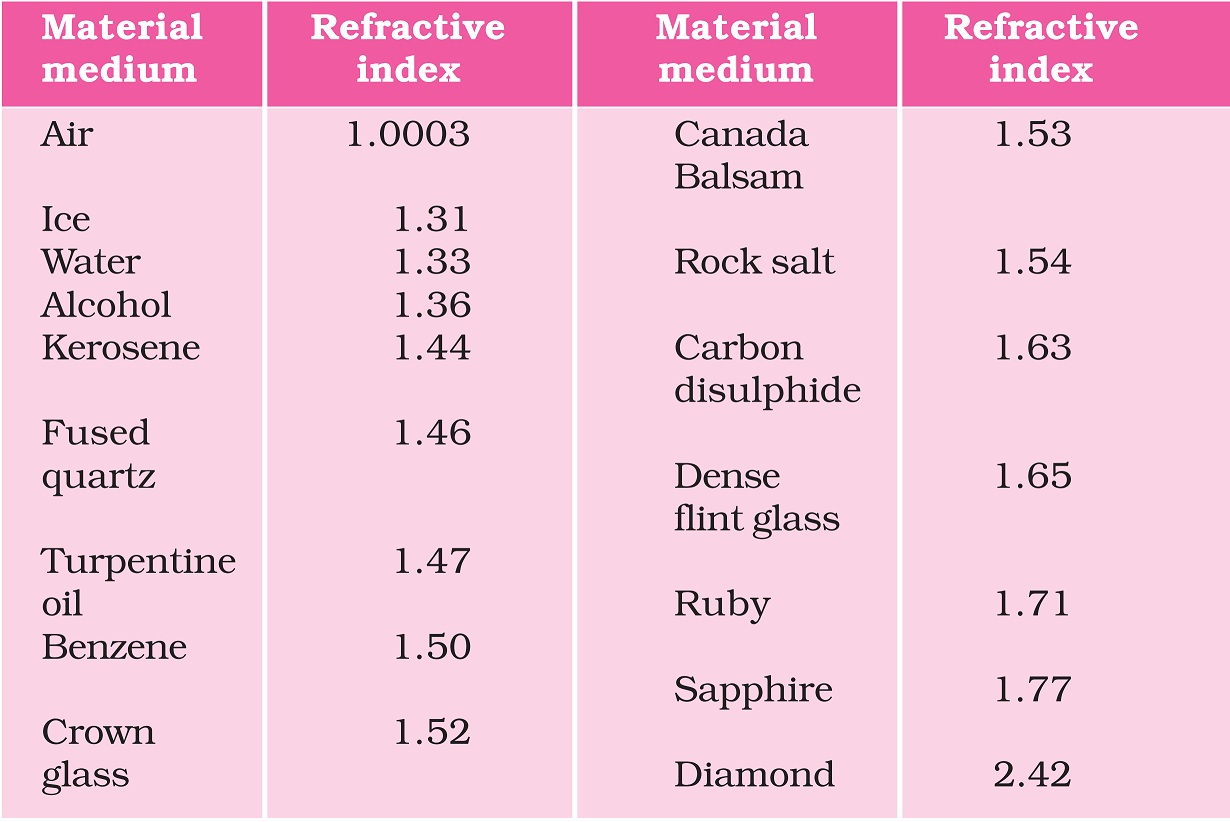Complete Solutions to Exercise of chapter LIGHT - REFLECTION AND REFRACTION of Class 10 book with complete answers and questions
| Class 10 | PHYSICS |
| Chapter | LIGHT - REFLECTION AND REFRACTION |
| NCERT | Exercise |
| Number Of Questions | 31 |
| Academic Year | 2023-24 |
Define the principal focus of a concave mirror.
01:42View SolutionThe radius of curvature of a spherical mirror is 20 cm. What is its focal length?
00:59View SolutionName a mirror that can give an errect and enlarged image of an object.
01:56View SolutionIn motor vehicles, a convex mirror is attached near the driver's seat to give him the view of the traffic behind. What is the special function of this convex mirror which a plane mirror can not do ?
02:04View Solution(a) What is focal length of a convex mirror of radius of curvature `20 cm`?
(b) What is radius of curvature of a mirror of focal length `- 50 cm` ?01:09View SolutionA concave mirror produces three times magnified real image of an object placed at 10 cm in front of it. Where is the image located ?
01:07View SolutionA ray of light travelling in air enters obliquely into water. Does the light ray bend towards the normal or away from the normal ? Why ?
02:51View Solution(a) The refractive index of glass is `1.5`. What is the speed of light in glass ? (Speed of light in vaccum is `3 xx 10^(8) ms^(-1)`).
(b) Is the speed of light in glass independent of colour of light ? If not, which of the two colours, red and violet travels slower in a glass prism ?01:24View SolutionFind out, from Table 10.3, the medium having highest optical density. Also find the medium with lowest optical density.
 03:04View Solution
03:04View SolutionYou are given kerosene, turpentine and water. In which of these does the light travel fastest ?
01:08View SolutionThe refractive index of diamond is `2.42`. What is the meaning of this statement ?
01:10View SolutionDefine one dioptre of power of a lens.
01:09View SolutionA convex lens forms a real and inverted image of a needle at a distance of `50 cm` from it. Where is the needle placed in front of the convex lens if the image is equal to size of the object ? Also, find the power of the lens.
07:22View SolutionFind the power of a concave lens of focal length `2 m`.
00:46View SolutionWhich one of the following materials cannot be used to make a lens ?
01:57View SolutionThe image formed by a concave mirror is observed to be virtual, erect and larger than the object. Where should be the position of the object?
02:07View SolutionWhere should an object be placed in front of a convex lens to get a real to get real image of the size of the object ?
04:07View SolutionA spherical mirror and a thin spherical lens each have a focal length of `- 15 cm`. The mirror and lens are likely to be
03:12View SolutionNo matter how far you stand from a spherical mirror, your image appears erect. The mirror is likely to be
01:29View SolutionWhich of the following lenses would you prefer to use while reading small letters found in a dictionary ?
01:05View SolutionWe wish to obtain an erect image of an object, using a concave mirror of focal length 15 cm. What should be the range of distance of the object from the mirror? What is the nature of the image? Is the image larger or smaller than the object? Draw a ray diagram to show the image formation in this case.
02:20View SolutionName the type of mirror used in the following situations :
(a) Head lights of a car.
(b) Side rear view mirror of a vehicle.
(c) Solar furnace.
Support your answer with reason.01:49View SolutionOne half of a convex lens is covered with a black paper. Will this lens produce a complete image of the object? Verify your answer experimentally. Explain your observations.
01:34View SolutionAn object `5 cm` in length is held `25 cm` away from a converging lens of focal length `10 cm`. Draw the ray diagram and find the position, size and the nature of the image formed.
02:55View SolutionA concave lens has focal length of 15 cm. At what distance should an object from the lens be placed so that it forms an image at 10 cm from the lens ? Also, find the magnification of the lens.
01:15View SolutionAn object is placed at a distance of `10 cm` from a convex mirror of focal length `15 cm`. Find the position and nature of the image ?
01:49View SolutionThe magnification produced by a plane mirror is `m = +1`. What does this mean ?
02:30View SolutionAn object `5.0 cm` in length is placed at a distance of `20 cm` in front of a convex mirror of radius of curvature `30 cm`. Find the position of image, its nature and size.
05:02View SolutionAn object of size `7.0 cm` is placed at `27 cm` in front of a concave mirror of focal length `18 cm`. At what distance from the mirror, should a screen be placed, so that a sharp focussed image can be obtained ? Find the size and nature of the image ?
02:40View SolutionFind the focal length of a lens of power `- 2.0 D`. What type of lens is this ?
02:27View SolutionA doctor has prescribed lens of power `+ 1.5 D`. Find the focal length of the lens. Is the prescribed lens diverging or converging ?
01:22View Solution
Exercise questions and complete solutions for chapter LIGHT - REFLECTION AND REFRACTION of NCERT PHYSICS(HINGLISH) of Class 10
